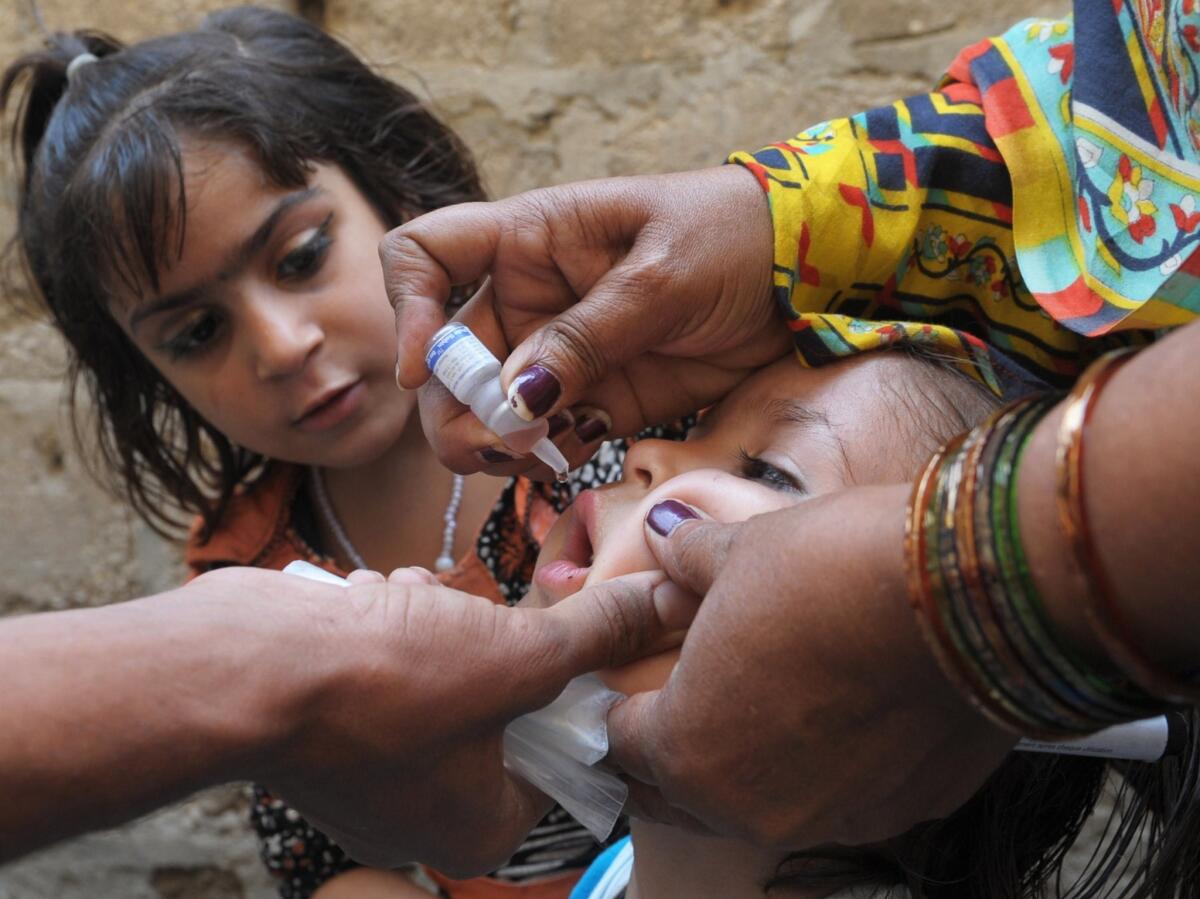Southeast Asia is polio-free, World Health Organization rules

- Share via
WASHINGTON – The World Health Organization declared Southeast Asia polio-free Thursday, marking a global health milestone for India, where the disease accounted for nearly half of all worldwide cases just five years ago.
The announcement comes after an independent commission of public health experts determined that the 11-nation region, as defined by the WHO, has not had a confirmed polio case for the last three years.
Map: Worldwide Polio Eradication
India’s official polio-free status came after a massive billion-dollar campaign, largely government-funded, that alerted the public to the importance of vaccinations and enlisted nearly 2.4 million volunteers to immunize 170 million children. It has had no confirmed polio case since January 2011.
Experts once were pessimistic about India’s chances of wiping out the disease, because of its large areas with poor sanitation, high population and low immunization rate. But John E. Lange, a retired U.S. ambassador, attributed India’s success to effective monitoring and the use of comprehensive plans to target remote populations.
“This is, in a sense, a proof of concept that polio can be eradicated in some of the most difficult places to work in,” said Lange, a senior fellow for global health diplomacy at the United Nations Foundation, which was created in 1998 to support U.N. programs.
Southeast Asia, home to one-quarter of the world’s population, is the fourth of six worldwide regions to earn a polio-free status. In 1995, the Americas became the first region WHO declared polio-free, followed by the Western Pacific region in 2000 and the European region in 2002.
The Southeast Asia region as listed by the WHO comprises Bangladesh, Bhutan, South Korea, India, Indonesia, Maldives, Myanmar, Nepal, Sri Lanka, Thailand and Timor-Leste.
Although the WHO said 80% of the world’s population now live in polio-free regions, officials note more work is needed, especially in Afghanistan, Nigeria and Pakistan, where the disease remains prevalent.
In a statement, Poonam Khetrapal Singh, director of the WHO’s Southeast Asia region, celebrated the “momentous victory” but warned “all countries are at risk and the region’s polio-free status remains fragile” until global eradication of the disease.
In many countries, health workers face tough political obstacles, Lange said, with threats from extremist groups such as the Taliban in Afghanistan and the Boko Haram in Nigeria. This week, news reports documented the brutal kidnapping and killing of a polio worker in Pakistan.
But to overcome the challenges posed by extremists, the eradication effort is pursuing a strategy that succeeded before: collaborating with regional governments.
“We’ve been able to work through the government and the local actors to ensure we have access into some of the districts and areas that may be occupied by some of the antigovernment elements,” said Tim Petersen, deputy director of the Bill & Melinda Gates Foundation’s polio team.
Polio, a viral disease that affects the nervous system, often spreads through regions with poor sanitation, where it largely affects children under age 5.
In 1998, the World Health Assembly passed a resolution calling for an end to polio by 2000. At the time, an average of 1,000 children a day were paralyzed by the disease worldwide, according to the Global Polio Eradication Initiative. The effort has made significant strides and last year the organization reported about 400 cases.
GPEI, which hopes to eradicate the disease by 2018, is a partnership between national governments, the WHO, UNICEF, Rotary International and the U.S. Centers for Disease Control and Prevention. It receives additional support from the Gates Foundation and the U.N. Foundation.
Ariel Pablos-Mendez, a top official at the U.S. Agency for International Development, said eliminating the disease in Southeast Asia should serve to generate momentum for global eradication.
“We must build on this historic moment. It pains me to think of little girls and boys who unnecessarily suffer from a disease that can be prevented for 14 cents,” Pablos-Mendez said in a statement, referring to the estimated cost of one oral polio vaccine dose.
Twitter: @danielrothberg
More to Read
Sign up for Essential California
The most important California stories and recommendations in your inbox every morning.
You may occasionally receive promotional content from the Los Angeles Times.













